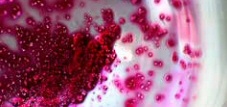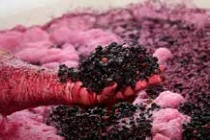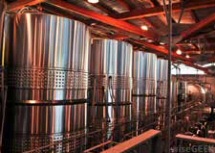
Getting an unexpected mouthful of sediment from a last sip of wine is not an experience most enjoy. In fact, most people are repulsed by it. And, truthfully, even for the heartiest of wine lovers, a sudden mouthful of grimy sediment surging into your mouth along with the last sip of wine you are prepared to savor is not a desired finale to your glass of wine. But, It happens. It’s similar to that last sip of coffee with grounds in it…not the end of the world, but not very enjoyable either.
Aside from the surprise and leaving a prominent trail in your glass, it’s not going to harm you. In our newsletter article last month, we talked about wine diamonds, which are a form of sediment. This month we’re going to expand the discussion to include all things sediment.
As a brief re-cap, wine diamonds are a form of crystallized tartaric acids which you may encounter, primarily with white wines. Many wineries utilize the process of cold stabilization with their white wines, which essentially removes this form of potential sediment. While the wine is in tanks undergoing fermentation it is subjected to near-freezing temperatures and this process speeds up the crystallization process. As the wine diamonds form, they will settle at the bottom of the tank. If cold stabilization is not used, there’s a chance you will find small crystals on the underside of corks or settled at the bottom of a bottle.
 Thus, wine diamonds are a form of sediment, and while they can occur with red wines which have aged for considerable periods of time, wine diamonds are mostly associated with white wines. The more traditional form of sediment is associated with red wines. Thus, wine diamonds are a form of sediment, and while they can occur with red wines which have aged for considerable periods of time, wine diamonds are mostly associated with white wines. The more traditional form of sediment is associated with red wines.
As a basic definition - sediment is solid material that has settled to the bottom of any container holding wine, which could be a bottle, vat, tank, cask, or barrel. This solid material can be a number of different things: dead yeast cells (from yeast strains added during the fermentation stage); insoluble fragments of grape pulp, skin, or seeds; or insoluble fragments from clinging clarification agents which the winemaker may have used (such as egg whites).
None of these materials would be harmful to you if swallowed. Furthermore, the presence of sediment does not indicate a fault in the wine. In fact, quite to the contrary and as we pointed out in the case of wine diamonds, normally it indicates a superior wine. The casual wine drinker would not be expected to realize this though, and this is the reason why most wineries have their wines clarified and stabilized before bottling to improve the appearance of their wines to the vast majority of potential consumers.
After fermentation, the force of gravity may eventually cause a wine to clarify naturally, as the larger suspended particles gradually settle to the bottom of a storage vessel. The wine can then be siphoned or “racked" off the compact solids into a new container. The process can be accelerated by using fining agents and or filtration methods.
 Fining is the process where a substance (fining agent) is added to the wine to create an adsorbent bond with the suspended particles, producing larger molecules and larger particles that will precipitate out of the wine more readily and rapidly. Unlike filtration, which can only remove particulates (such as dead yeast cells and grape fragments), fining can remove soluble substances as well. Fining is the process where a substance (fining agent) is added to the wine to create an adsorbent bond with the suspended particles, producing larger molecules and larger particles that will precipitate out of the wine more readily and rapidly. Unlike filtration, which can only remove particulates (such as dead yeast cells and grape fragments), fining can remove soluble substances as well.
While fining clarifies wine by binding to suspended particles and precipitating out as larger particles, filtration works by passing the wine through a filter medium that captures particles. Complete filtration may require a series of filtering through progressively finer filters.
Some winemakers prefer not to thoroughly clarify and stabilize their wines, believing that the processes involved may diminish a wine's aroma, flavor, texture, color or aging potential. Clarifying and stabilizing it can be a risky proposition as it may improve wine quality when used with moderation and care, but it can diminish quality when used to excess. Normally you can expect to encounter sediment, especially in red wines, for wines which are designed to age in the bottle. Wines which are meant to be opened within a few years after being released, which is the majority of wine production in the world today, will typically not have sediment.
 Although now you know not to fear sediment, you may wish to still avoid the whole mouthful of sediment experience. Methods to help you achieve this include decanting your red wines prior to drinking, which is always a good idea anyway to help a red wine’s bouquet and aromas to open-up. You may also invest in a sediment strainer to put on a bottle before pouring. Alternatively, just be aware of the wine you are savoring and know that if it’s a high quality wine or a bottle with some age, you may want to show some restraint on finishing that last sip from your glass. Although now you know not to fear sediment, you may wish to still avoid the whole mouthful of sediment experience. Methods to help you achieve this include decanting your red wines prior to drinking, which is always a good idea anyway to help a red wine’s bouquet and aromas to open-up. You may also invest in a sediment strainer to put on a bottle before pouring. Alternatively, just be aware of the wine you are savoring and know that if it’s a high quality wine or a bottle with some age, you may want to show some restraint on finishing that last sip from your glass. |